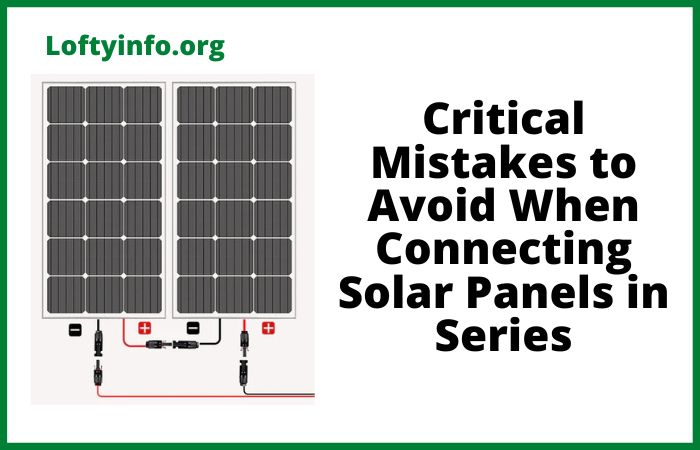MC4 Fuse Breakers: Complete Guide On How it Works And its Functions
MC4 fuse breakers are essential protective components in solar panel systems that combine the convenience of MC4 connectors with the safety features of circuit protection.
These inline protective devices have become increasingly important as solar installations grow more complex and require robust protection mechanisms.
Understanding how MC4 fuse breakers work and their various functions is crucial for anyone involved in solar system design, installation or maintenance.
What Are MC4 Fuse Breakers?
MC4 fuse breakers are protective electrical components that feature MC4 connectors on both ends with an integrated fuse element designed to interrupt electrical current when it exceeds safe operating parameters.
These devices are specifically engineered for photovoltaic (PV) systems and are designed to handle the unique characteristics of DC solar power, including high voltages that can reach up to 1000V DC or more.
The design typically consists of a weatherproof housing containing a replaceable fuse element, with male and female MC4 connectors that allow for easy integration into existing solar panel wiring systems.
The housing is constructed from UV-resistant materials to withstand prolonged outdoor exposure, while internal components are designed to minimize contact resistance and ensure reliable operation over many years.
How MC4 Fuse Breakers Work
The fundamental operating principle of MC4 fuse breakers is based on controlled thermal interruption.
When electrical current flows through the fuse element inside the breaker, it generates heat proportional to the current squared (I²R heating).
Under normal operating conditions, this heat is safely dissipated through the housing and surrounding environment.
When current exceeds the fuse’s rated capacity, the heating effect becomes more pronounced.
The fuse element, typically made from a carefully calibrated metal alloy, reaches its melting point and creates an open circuit.
This interruption happens within milliseconds to seconds, depending on the magnitude of the overcurrent condition.
The timing characteristics are precisely engineered to allow for normal operational variations while providing rapid protection during fault conditions.
Modern MC4 fuse breakers often incorporate time-delay characteristics that prevent nuisance tripping from brief, harmless current spikes while still providing fast protection for dangerous fault currents.
Functions of MC4 Fuse Breakers
1. Overcurrent Protection for Individual Solar Panels
The primary function of MC4 fuse breakers is protecting individual solar panels from excessive current flow that could damage the photovoltaic cells or connecting wiring.
In parallel-connected solar arrays, if one panel becomes shaded or develops a fault, it can potentially draw current from other panels in the string rather than contributing power to the system.
This reverse current flow known as backfeed can cause localized heating in the affected panel’s cells potentially leading to hot spots cell degradation or even fire hazards.
MC4 fuse breakers interrupt this reverse current flow before it can cause damage, effectively isolating the problematic panel while allowing the rest of the array to continue operating normally.
The protection is particularly important in large arrays where the combined current from multiple panels could significantly exceed what a single panel is designed to handle safely. By installing appropriately rated MC4 fuse breakers on each panel’s positive output, installers ensure that no panel can receive more current than its maximum series fuse rating specifies.
2. System Isolation and Safety During Maintenance
MC4 fuse breakers provide a crucial safety function by enabling system isolation during maintenance operations.
Unlike traditional fuses that require specialized tools or enclosures to replace, MC4 fuse breakers can be easily disconnected using standard MC4 connector tools, creating a visible break in the circuit.
This feature is invaluable for maintenance technicians who need to work on specific sections of a solar array.
By removing the MC4 fuse breaker, they create a clear isolation point that prevents accidental energization of the circuit they’re working on.
The visual confirmation of disconnection provides an additional safety margin compared to hidden fuses or breakers located in remote enclosures.
The isolation capability also extends to emergency situations where rapid system shutdown is necessary.
First responders can quickly identify and disconnect MC4 fuse breakers to de-energize portions of a solar system, reducing electrical hazards during emergency operations on or near solar installations.
3. Arc Fault Protection and Fire Prevention
Modern MC4 fuse breakers incorporate design features that help prevent and mitigate arc faults, which are among the leading causes of solar system fires.
Arc faults occur when electrical current jumps across a gap in damaged wiring or loose connections, creating intense heat and potentially igniting nearby combustible materials.
The fuse element in MC4 breakers is designed to interrupt fault currents before they can sustain dangerous arcing conditions.
The speed of interruption is critical.
The faster the fuse operates, the less energy is available to sustain an arc.
High-quality MC4 fuse breakers can interrupt fault currents in milliseconds, significantly reducing the risk of sustained arcing.
The sealed construction of MC4 fuse breakers contains any arcing that occurs during the fuse operation, preventing hot gases or particles from escaping and potentially igniting nearby materials.
This containment feature is particularly important in rooftop installations where combustible roofing materials may be present.
4. Voltage Drop Minimization and System Efficiency
Well-designed MC4 fuse breakers contribute to overall system efficiency by minimizing voltage drops across their connections.
High-quality units feature low-resistance contacts and conductors that introduce minimal impedance into the circuit, typically less than 0.35 milliohms contact resistance.
This low resistance is crucial because even small voltage drops can accumulate across multiple connection points in a large solar array, reducing overall system power output.
By maintaining tight manufacturing tolerances and using high-conductivity materials, premium MC4 fuse breakers ensure that protective functionality doesn’t come at the expense of system performance.
The efficiency function also extends to thermal management.
Lower resistance means less heat generation during normal operation, which improves the reliability and longevity of both the fuse breaker and surrounding components.
Reduced heat generation also helps maintain the stability of nearby electrical connections, preventing thermal cycling that could lead to connection degradation over time.
5. Environmental Protection and Weatherproofing
MC4 fuse breakers provide essential environmental protection for the fuse element and connections within their sealed housings.
Solar installations are exposed to extreme weather conditions including UV radiation, temperature cycling, moisture and mechanical stress from wind and thermal expansion.
The weatherproof housing protects internal components from moisture ingress that could cause corrosion or tracking failures.
UV-resistant materials prevent degradation of the housing that could lead to cracking or discoloration over the 25+ year lifespan expected from solar installations.
Temperature stability ensures that the fuse characteristics remain consistent across the wide temperature range experienced in outdoor installations.
This protective function is critical for maintaining system reliability and safety over time. Without proper environmental protection, fuse elements could degrade unpredictably, either becoming overly sensitive and causing nuisance trips or becoming less sensitive and failing to provide adequate protection when needed.
6. Compliance with Electrical Codes and Standards
MC4 fuse breakers help solar installations comply with various electrical codes and standards, including the National Electrical Code (NEC) in the United States and similar codes internationally.
These codes often require overcurrent protection for parallel-connected solar panel strings to prevent unsafe operating conditions.
The standardized MC4 connector format ensures compatibility with other system components and allows for consistent installation practices across different manufacturers and installers.
This standardization reduces the likelihood of installation errors that could compromise safety or performance.
Certified MC4 fuse breakers undergo rigorous testing to demonstrate compliance with relevant safety standards, including tests for mechanical strength, environmental resistance, electrical performance and fault interruption capability.
This certification provides assurance to installers, inspectors, and system owners that the protective devices will perform as expected throughout their service life.
Sizing and Selection Considerations
Proper sizing of MC4 fuse breakers requires careful consideration of several factors, including the maximum series fuse rating specified by the solar panel manufacturer, the short-circuit current of the panels and the overall system configuration.
The fuse rating should not exceed the panel’s maximum series fuse rating but should be high enough to avoid nuisance tripping during normal operation.
A common calculation method involves determining the system’s operating current and adding a safety margin.
For example, if a solar panel produces 8 amps under standard test conditions, a 15-amp fuse might be appropriate, providing adequate protection while allowing for normal variations in operating conditions.
Temperature derating is another important consideration, as fuse characteristics can change with ambient temperature.
High-quality MC4 fuse breakers are designed to maintain consistent performance across the temperature range expected in solar installations but installers should verify that the selected fuse rating accounts for temperature effects.
Installation Best Practices
Proper installation of MC4 fuse breakers is crucial for their effective operation.
The devices should be installed in accessible locations that allow for easy inspection and replacement while protecting them from mechanical damage.
Adequate clearance should be maintained around the fuse breakers to allow for thermal dissipation and connector manipulation.
Connector assembly requires attention to proper mating and securing to prevent water ingress or mechanical failure.
The use of appropriate tools and techniques ensures reliable connections that will maintain their integrity throughout the system’s operational life.
Regular inspection and testing protocols should be established to verify continued proper operation.
Conclusion
MC4 fuse breakers represent a critical evolution in solar system protection, combining the convenience of standardized connectors with robust overcurrent protection capabilities.
Their multiple functions from individual panel protection to system-wide safety and code compliance make them indispensable components in modern solar installations.
Understanding these key functions enables solar professionals to make informed decisions about system design and component selection, ultimately resulting in safer, more reliable, and more efficient solar power systems.
As solar technology continues to advance and installations become more complex, the role of protective devices like MC4 fuse breakers will only become more important in ensuring the continued safe and reliable operation of photovoltaic systems worldwide.
Growatt inverter troubleshooting
How to configure inverter correctly before use after installation
Critical mistakes to avoid when connecting solar panels in series






